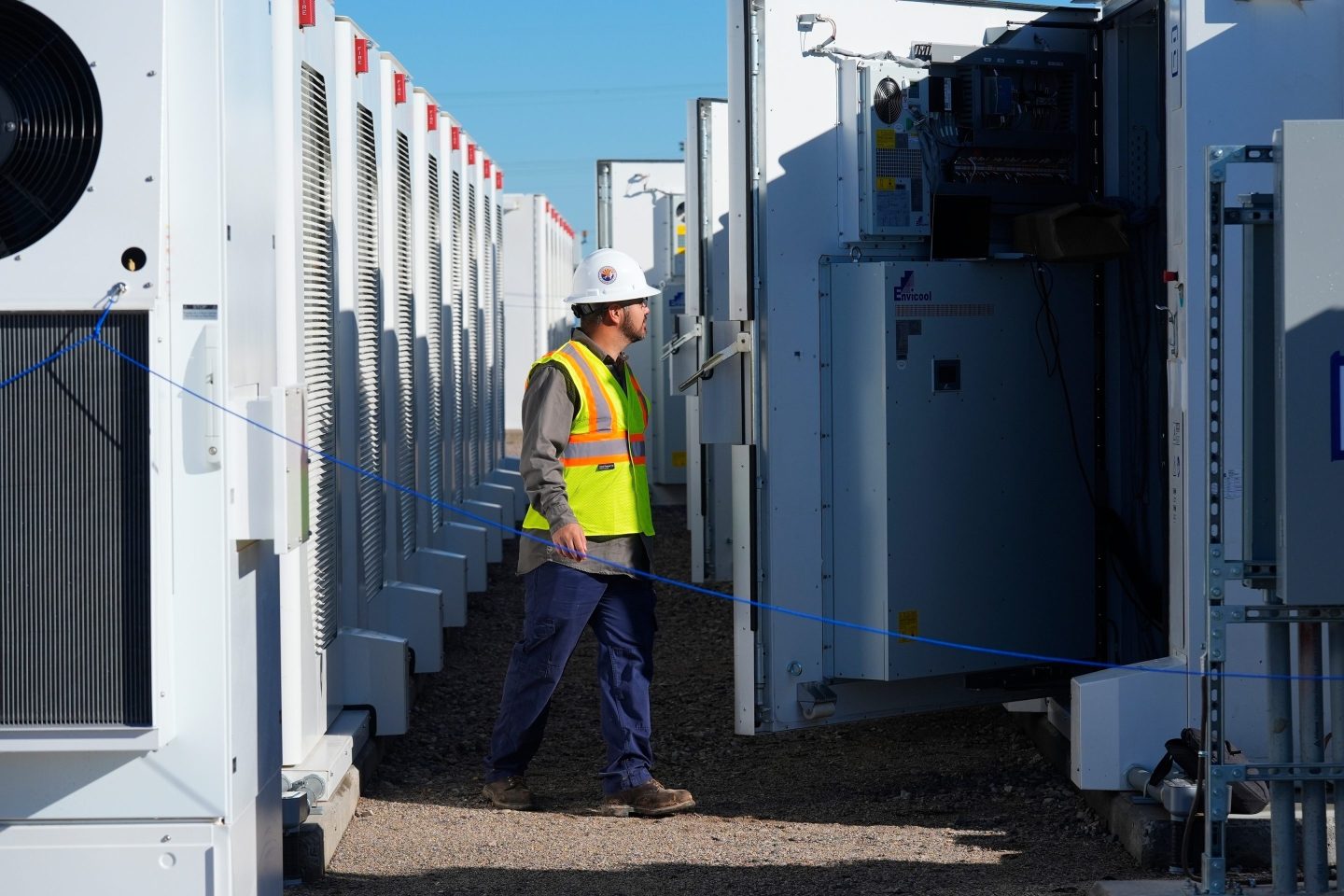Our mission to make business better is fueled by readers like you. To enjoy unlimited access to our journalism, subscribe today.
As power has returned en masse to Texas, the state faces long-term questions about the fragility of its vast energy infrastructure in an age of increasingly unpredictable weather patterns—and how to prevent the outage from happening again.
The freezing temperatures affected everything from the oil-producing Permian Basin, to the natural-gas-fired power plants, to Texas’s unusually self-contained grid system—an interconnected failure that’s been called a “perfect storm” and a “Black Swan event.” But icy rotors, which slowed Texas wind energy production—responsible for only about 7% of the state’s winter power—got particular attention, with some politicians claiming the state’s renewable energy sources were particularly vulnerable.
In fact, the outages were overwhelmingly because of shutdowns of conventional power infrastructure, particularly gas. About 80% of Texas’s power comes from gas, coal, or nuclear, according to ERCOT, the Electric Reliability Council of Texas.
In fact, in a state where weather is more likely to include scorching heat waves and powerful hurricanes, wind turbines were vulnerable for the same reason other infrastructure was vulnerable: It doesn’t usually snow in Texas. While turbines have increasingly been adapted to extreme weather, they’ve been adapted to extreme weather that those regions are likely to expect.
The world’s iciest wind farms
There’s a reason you don’t hear about constant wind farm outages in the chillier corners of the world. In places like Russia, northern Sweden, and Canada, extreme cold is something that’s accounted for in the earliest stages of planning, says Brian Daugbjerg Nielsen, a senior product manager who works on cold climate solutions at Vestas, the world’s largest turbine manufacturer.
An assessment of the climate where a wind farm is to be located includes not just cold, but humidity and wind speed. If the wind isn’t blowing, it doesn’t much matter if the rotors are icy, Daugbjerg Nielsen points out. It’s also a matter of assessing how much that ice—which slows the rotors and potentially stops them moving entirely—could affect production over an entire year, a percentage calculated as annual energy production (AEP).
The Nordic countries, home to vast wind farms and dark, wet winters, have a rate of around 3% to 4%, says Daugbjerg Nielsen. The extra investment in mitigating the impact of the ice is usually triggered in locations that have a 4% loss or above, he says, while 10% represents an “extremely severe” site.
Minimizing the impact of ice could mean changing where the turbines are located and how they’re arranged. It could also mean installing de-icing or anti-icing products—a growing and fairly recent area of business for companies like Vestas. De-icing products, launched in 2018, include installing panels directly in the turbine rotors that warm up the rotors, keeping them ice-free.
These kinds of products aren’t found just in places like Sweden and Canada; some wind farms in Greece and Turkey have them too.
“If they have mountains, obviously they’ll have ice and snow up there as well,” points out Daugbjerg Nielsen.
On the flip side, he notes that because water off the coasts tends to be warmer, it’s less of an issue for offshore turbines.
Places like Texas, where vicious cold snaps may happen only once a decade, are difficult. Their climates are unlikely to trigger a business case for de-icing technology, even if that once-in-a-decade storm is disastrous.
A retrofit would require removing the rotors and reinstalling them—a “huge investment,” he says.
Heat, hurricanes, and lightning
But for turbines—as for other pieces of energy infrastructure—it’s not just cold, or even primarily extreme cold, that poses risks. All forms of extreme weather must be accounted for.
Extreme heat, with temperatures of 113 F and above, is arguably an even greater threat.
“We see [de-icing products] more as a niche, where the high-temperature market is becoming more and more a focus,” says Daugbjerg Nielsen. He also says there tends to be more wind development in the regions that have greater risks of high temperatures, as opposed to ultralow temperatures.
The problems posed in extremely high temperatures are mainly that the equipment used by the turbine will overheat and shut down, stopping production, so these Vestas turbines are built with additional special cooling systems.
Turbines also must be able to function during hurricanes, he says—which can mean installing backup power systems that can be used during blackouts to allow the turbines to adjust their direction to face the wind—technology that is used in the Philippines. Similarly, turbines in Japan must be adapted to withstand extremely strong wind and severe lightning storms, Daugbjerg Nielsen says.
But while turbines must increasingly be adapted to the climate and extreme weather events they’re most likely to face, what happens when freak events—snow in Texas, extreme heat in Siberia—become more common? Should a turbine be able to withstand anything that nature throws at it?
As always, it comes down to just how much developers are willing to invest to anticipate every possible scenario.
“It’s also a design tradeoff,” points out Daugbjerg Nielsen. “If the standard turbine incorporates everything, it might get a bit too expensive.”
As with every piece of infrastructure that will be subject to a rapidly changing climate, turbines face the question of whether climate models for the coming decades can anticipate exactly what kinds of adaptations they’ll need, and ultimately—how much Texas is willing to pay.
More must-read stories from Fortune:
- Reformed Bitcoin miner: Elon Musk’s $1.5 billion bet is “crazy”
- Financial sacrilege: Saving for retirement could be a mistake for twenty- and thirtysomethings
- Z-Work is a new SPAC with an unusual target: The gig economy
- The electrification of the auto industry is speeding up—and shaking up the energy economy
- World’s Most Admired Companies











